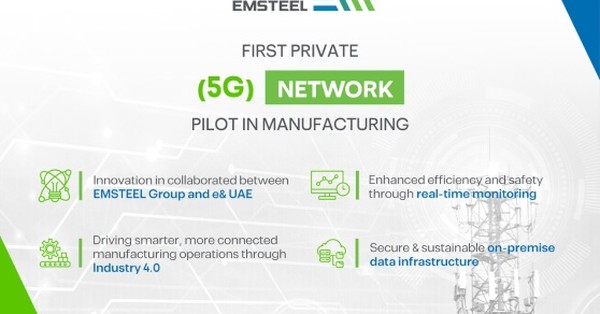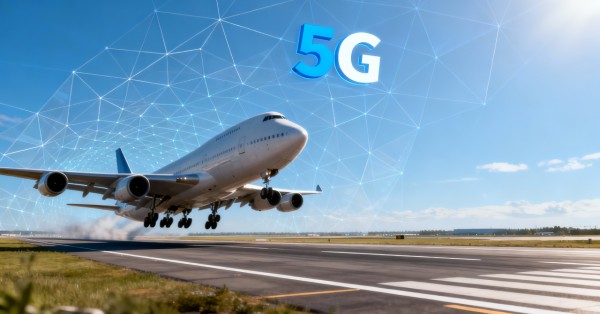IS-Wireless has been selected to deploy a private 5G network at the Fraunhofer Heinrich-Hertz-Institut (HHI). This initiative is part of CampusOS, a project aimed at fostering the ecosystem for open 5G campus networks in Germany and Europe.
Challenges in Private 5G Deployment
Deploying a private 5G network involves overcoming technical challenges such as managing high data volumes and ensuring low-latency communication. Additionally, preventing unwanted interferences and optimizing data processing infrastructure are critical.
IS-Wireless’s Innovative 5G Solution
IS-Wireless will install its private 5G network solution at Fraunhofer HHI’s Berlin site, delivering both indoor and outdoor connectivity. The solution includes Open RAN components such as the Open RAN Distributed Unit (O-DU), Centralized Unit (O-CU), and near real-time RAN Intelligent Controller (Near-RT RIC). These components will support high-demand, 5G-based campus networks, enhancing applications like Industry 4.0, automated guided vehicles (AGVs), and 3D mapping for improved in-house transport.
Industry Support and Collaboration
The project consortium includes industry giants like Bosch, Siemens, Rohde & Schwarz, and Deutsche Telekom. Funded by the German Federal Ministry for Economic Affairs and Climate Action (BMWK), this initiative demonstrates a robust collaboration to advance 5G technology.
The Role of Open RAN Technology
IS-Wireless’s technology focuses on Open RAN, which offers flexibility and cost-efficiency. The use of a near real-time RAN Intelligent Controller ensures optimal performance and minimal interference. Their solution, Liquid RAN, emphasizes efficient use of communication resources, leading to cost and energy savings.
Benefits of the 5G Network
The 5G network will enable near real-time coordination of distributed and mobile work processes. It will support digital twins of construction sites, enhancing construction logistics and site management. The optimal placement of data processing infrastructure and interference management are crucial for seamless operations.
Impact on Manufacturing and Logistics
This deployment will significantly impact industries like manufacturing, logistics, and construction. The ability to manage large data volumes and ensure low-latency communication will drive innovation and efficiency in these sectors.
IS-Wireless’s Expertise in 5G Solutions
IS-Wireless plays a crucial role in providing advanced 5G solutions tailored to industrial needs. Their technology ensures seamless communication and data processing, addressing key challenges in modern industrial applications. IS-Wireless has also deployed private 5G at the Werner-von-Siemens Center for Industry and Science in Berlin, demonstrating their expertise and reliability.
Partner Contributions and Expertise
Partners like Bosch, Siemens, and Deutsche Telekom bring their expertise and resources to the project, ensuring comprehensive support and successful deployment. Fraunhofer HHI, a leader in mobile and optical communication networks, co-coordinates the CampusOS flagship project and provides a reference test field to evaluate end-to-end performance. Their integration of AI offers individual solutions for campus networks, lowering entry thresholds for SMEs.
Project Deployment Status
The deployment at Fraunhofer HHI is underway, with installations at Berlin’s Lanolinfabrik site. This project marks a significant milestone in the development of 5G campus networks in Germany. The project is part of a broader initiative under CampusOS, with ongoing developments and future commercial deployments planned for the German market.
Leadership Endorsements
Artur Chmielewski, Head of Sales at IS-Wireless, emphasized the importance of handling large data volumes and ensuring low latencies. He highlighted the advanced scheduler designed to manage interferences, showcasing IS-Wireless’s innovative approach.
This deployment at Fraunhofer HHI represents a significant step towards the future of 5G campus networks in Germany and Europe.
About Fraunhofer HHI
Fraunhofer HHI is a world leader in developing mobile and optical communication networks and systems. They focus on innovations for the digital society of the future, from fundamental research to prototype development. In the CampusOS project, they are developing open components for 5G campus networks and creating a reference test field to evaluate end-to-end performance. Their work integrates AI to offer individual solutions for campus networks and aims to lower entry thresholds for SMEs in the radio access network market. Learn more.
About IS-Wireless
IS-Wireless provides reliable private 5G solutions addressing use cases of Industry 4.0, mission-critical, and campus networks. Their offering covers all network functionalities from RAN to Core, including pre-integrated hardware and software network elements. IS-Wireless builds networks in the Open RAN model, focusing on efficient use of communication resources through their Liquid RAN technology, which enables significant savings in deployment costs and energy consumption.







































